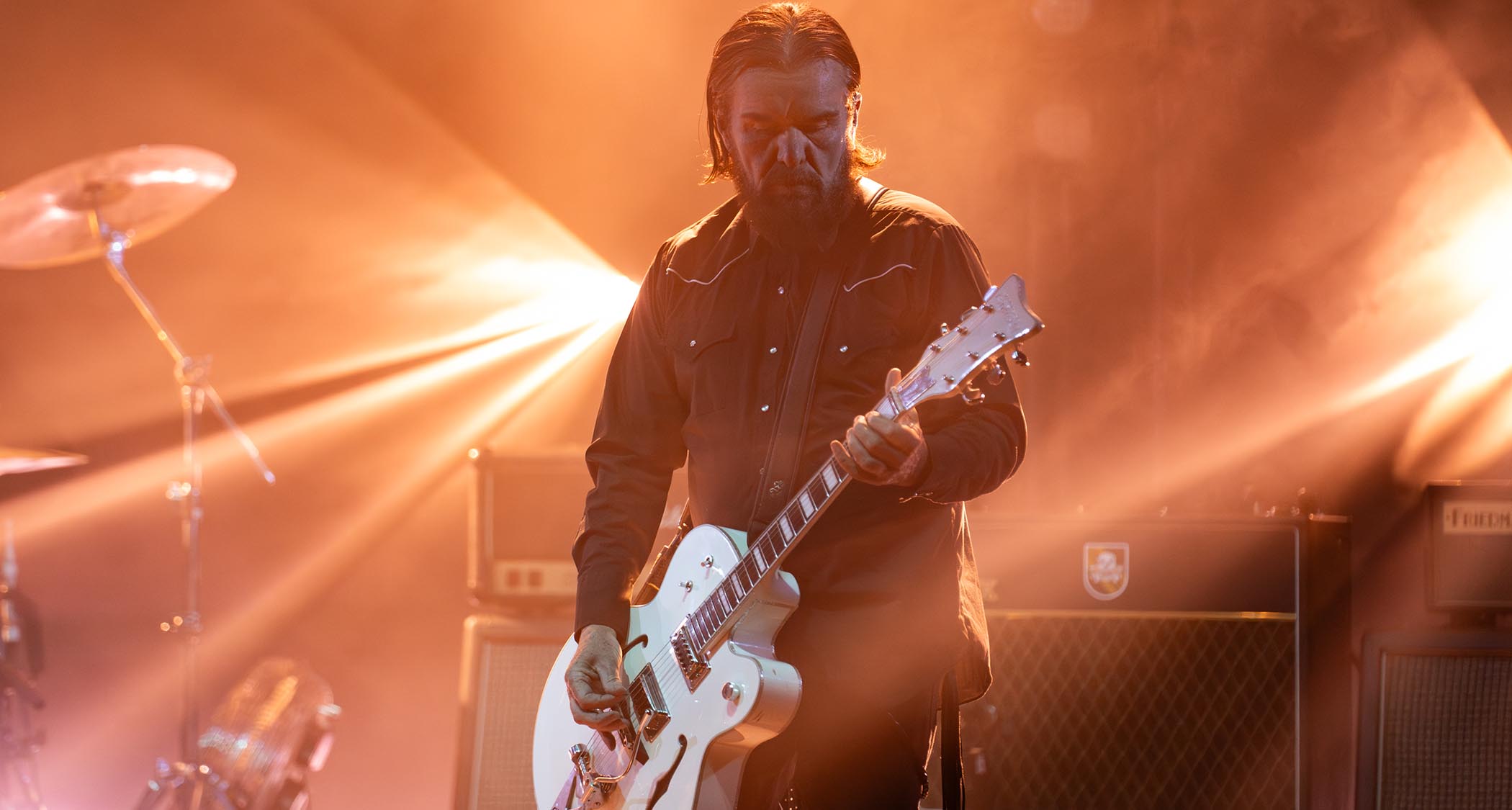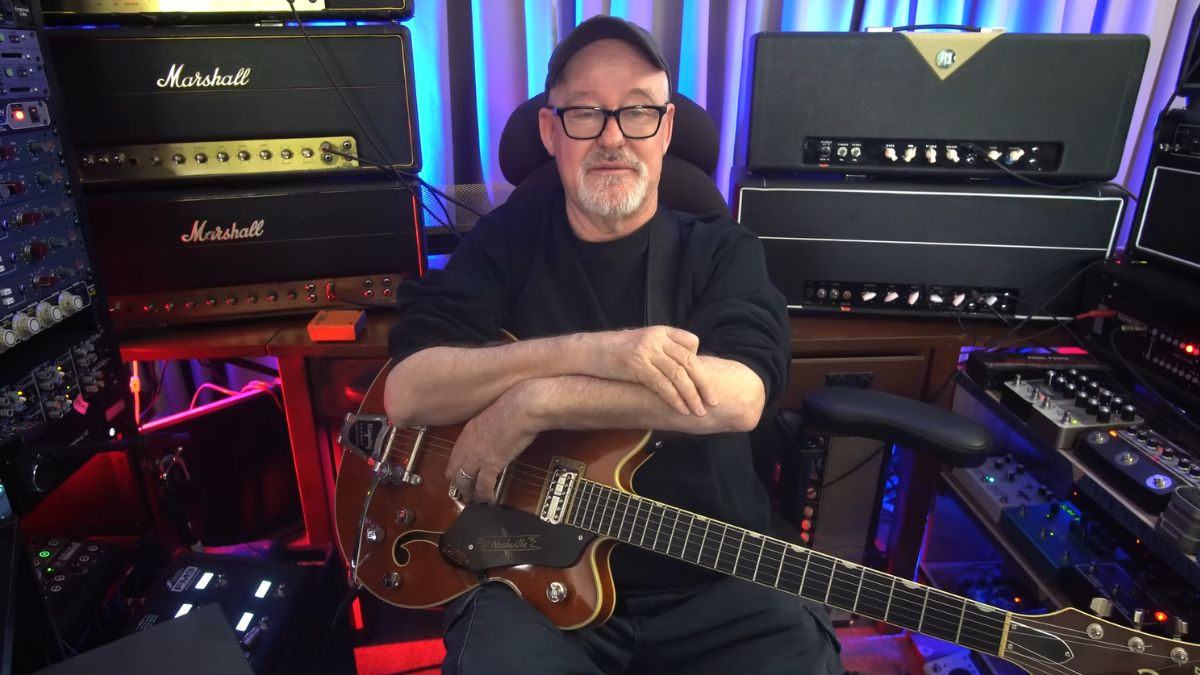With Bob Rock and Rick Rubin at the helm, he recorded some of rock’s most iconic riffs, and launched side-projects with Jerry Cantrell, John Corabi and The Alarm’s Mike Peters – how Billy Duffy’s guitar playing built a Cult following
Duffy’s unique playing style has made the Cult one of rock’s most enigmatic artists, and this video lesson goes deep inside the Sonic Temple to spill the secrets to his rhythm and lead approaches

The Cult were formed in 1983 in Bradford, England by vocalist Ian Astbury, guitarist Billy Duffy, Jamie Stewart on bass, and drummer Ray Taylor-Smith. There have been numerous bassists and drummers over the years, with Astbury and Duffy the mainstays of the band throughout its career.
Beginning as a post-punk or gothic rock band, The Cult achieved success in the late ’80s and early ’90s with a more mainstream rock sound. She Sells Sanctuary was a big UK hit in 1985, and then with producer Rick Rubin at the helm gained success in the USA as well, with songs like Love Removal Machine.
Rubin used the AC/DC blueprint of simple, medium-fast tempo (allegro) arrangements around the 130bpm mark, with classic guitar riffs and catchy vocal melodies, to great effect. At a time when bands were utilising overblown, ‘everything but the kitchen sink’ arrangements, The Cult headed in the opposite direction and kept things minimal but effective.
After Rubin steered them to mainstream chart success, The Cult also recorded with Metallica and Bon Jovi producer Bob Rock, which helped to solidify and maintain their commercial appeal in an era that saw rock dominate the mainstream charts.
But don’t be fooled into thinking it was the producers that took The Cult in a direction they didn’t want to go; Duffy grew up on a diet of Queen, Aerosmith, Thin Lizzy and Led Zeppelin, and his playing shows a significant influence from those bands. He has also been involved with side-projects featuring Alice In Chains guitarist Jerry Cantrell, John Corabi of Mötley Crüe, and The Alarm’s Mike Peters.
Our track is at the appropriate tempo of 130bpm, which is indicative of the kind of pace that many of us walk at, and find an innate familiarity with, not least of all due to it being slightly faster and more exciting than a ‘two beats per second’ speed.
The key is A minor (A-B-C-D-E-F-G), but mostly when the F note is played it’s an F#, not an F natural. This gives us the sound of A Dorian mode (A-B-C-D-E-F#-G), which is still minor, but with a brightness not present in the A natural minor scale. There is also an A major chord during the second section, which contains the notes A-C#-E.
All the latest guitar news, interviews, lessons, reviews, deals and more, direct to your inbox!
The solo is also built around A Dorian mode, although the phrasing is based around A minor pentatonic (A-C-D-E-G), along with one phrase that adds an Eb to make the A minor blues scale. The theory may sound complex in print, but in reality you can just think A minor pentatonic plus F# and/or Eb and you won’t go far wrong.
Get the tone
Amp Settings: Gain 6, Bass 7, Middle 6, Treble 7, Reverb 4
It's humbucking pickup territory, if possible. Duffy is a famous Gretsch White Falcon and Gibson Les Paul Custom player. If you don’t have access to humbuckers, roll some treble off single-coils. A classic Marshall amp sound with plenty of power amp gain and not too much saturation is the way to go for this type of tone. Use light to medium reverb/delay.
Example 1. Rhythm
Getting the single notes inside the chords to ring clearly is going to be of paramount importance, particularly as this type of arrangement is usually going to have double-tracked guitar parts. Pay attention to the louder articulations (dynamics) on a few of the chords as well.
Example 2. Lead
The fast phrase towards the end of the solo uses picking, hammer-ons and pull-offs. With this type of phrase, use whichever fingers feel most comfortable to you.


